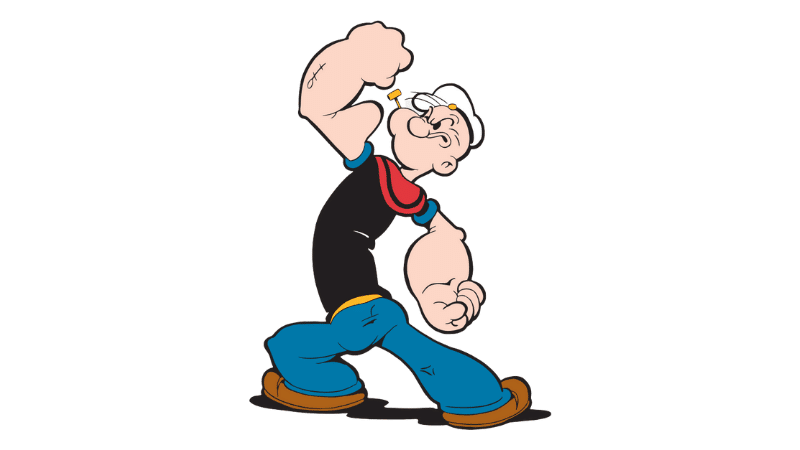A biceps tendon rupture occurs when the biceps muscle is torn from the bone at the point of attachment (tendon) to the shoulder or elbow. Most commonly, the biceps tendon is torn at the shoulder.
These tears occur in men more than women; most injuries occur at 40 to 60 years of age due to chronic wear of the biceps tendon. In younger individuals, the tear is usually the result of trauma (such as an auto accident or fall).
Biceps tendon ruptures can also occur at any age in individuals who perform repetitive overhead lifting or work in occupations that require heavy lifting, and in athletes who lift weights or participate in aggressive contact sports.
If you’ve torn your bicep, you might be asking yourself the question “Can I still workout with a torn bicep tendon?” If this sounds like you, continue reading to learn more.
What is a Bicep Tendon Rupture?
The shoulder is a ball-and-socket joint made up of 3 bones: the upper-arm bone (humerus), the shoulder blade (scapula), and the collarbone (clavicle). The ball at the top of the upper-arm bone is called the head of the humerus.
The socket on the shoulder blade is called the glenoid fossa. A tendon is a fibrous bundle that attaches a muscle to a bone. The muscles and tendons of the rotator cuff hold the ball into the socket of the shoulder.
The biceps muscle has 2 tendons that attach it to the shoulder and travel the length of the upper arm and insert just below the elbow. The biceps muscle is responsible for bending (flexing) the elbow and rotating the forearm.
One of the tendons is called the “long head” of the biceps muscle; it attaches to the upper-arm bone. The second area of attachment is called the “short head” of the biceps; it attaches the muscle to a bony bump on the shoulder blade called the coracoid process.
Most commonly, the biceps tendon will tear at the long head of the biceps at the upper-arm bone, leaving the second attachment at the shoulder blade intact. The arm can still be used after this type of rupture, yet weakness will be present in the shoulder and upper arm.
A tear can either be partial when part of the tendon remains intact and only a portion is torn away from the bone or complete, where the entire tendon is torn away from the bone.
How Does it Feel?
After sustaining a biceps tendon rupture, it’s possible to experience:
- Sharp pain in the upper arm or elbow
- Hearing a “pop” or snap at the shoulder or elbow
- Bruising and swelling in the upper arm to elbow
- Weakness in the arm when bending the elbow, rotating the forearm, or lifting the arm overhead
- Tenderness in the shoulder or elbow
- Muscle spasms in the shoulder and arm
- A bulge or deformity in the lower part of the upper arm (a “Popeye arm”)

How Will a SportsCare Physical Therapist Diagnose It?
In most cases, a thorough history and physical examination of the involved arm can diagnose a biceps tendon rupture.
Your physical therapist will ask you several questions regarding your medical history, your regular daily tasks at home and at work, and your recreational or sports activities.
Your physical therapist will ask how the injury happened and where you are having pain and/or weakness.
They will examine your entire upper arm for bruising or swelling, and gently touch it to determine if there is any tenderness over the biceps region at the shoulder, upper arm, or elbow.
Your physical therapist also will examine the amount of motion and strength present on the involved side of the shoulder, forearm, and elbow, compared to the non-involved side.
Functional testing may also be performed to determine what daily tasks are difficult for you to perform (eg, lifting an object, reaching overhead, reaching behind the body, or rotating the forearm to open a door).
How Can SportsCare Physical Therapy Help?
A biceps tendon rupture often is treated without surgery. Your physical therapist will design an individualized treatment program to help heal your injury in the safest and most efficient way possible. Treatment may include:
- Rest. You will be instructed in ways that allow the limb to rest to promote healing.
- Icing. Your physical therapist will show you how to apply ice to the affected area to manage pain and swelling.
- Range-of-Motion Activities. Your physical therapist will teach you gentle mobility exercises for the shoulder, elbow, and forearm, so your arm does not get stiff during the healing process.
- Strengthening Exercises. As the pain and swelling ease, gentle strengthening exercises with resistance bands or light weights will be added.
- Functional Activities. You will learn exercises to help you return to the activities you performed before the injury.
- Education. Your physical therapist will teach you how to protect your joints from further injury. You will learn how to properly lift objects once the arm is healed, and how to avoid lifting objects that are simply too heavy.
Your physical therapist can also tell you if you can lift weights with a torn bicep and give you exercises for Popeye bicep muscle injuries.
If you or someone you know can benefit from physical therapy or are still wondering “Can I still workout with a torn bicep tendon?” or “can you do push-ups with a torn bicep?”, text your zip code to 1-844-700-0013 to find a location nearest to you, or request an appointment here.
If you’d like to come in for a complimentary wellness screening first, you encourage you to do so by filling out this form. To verify your insurance, you may also follow this link.


